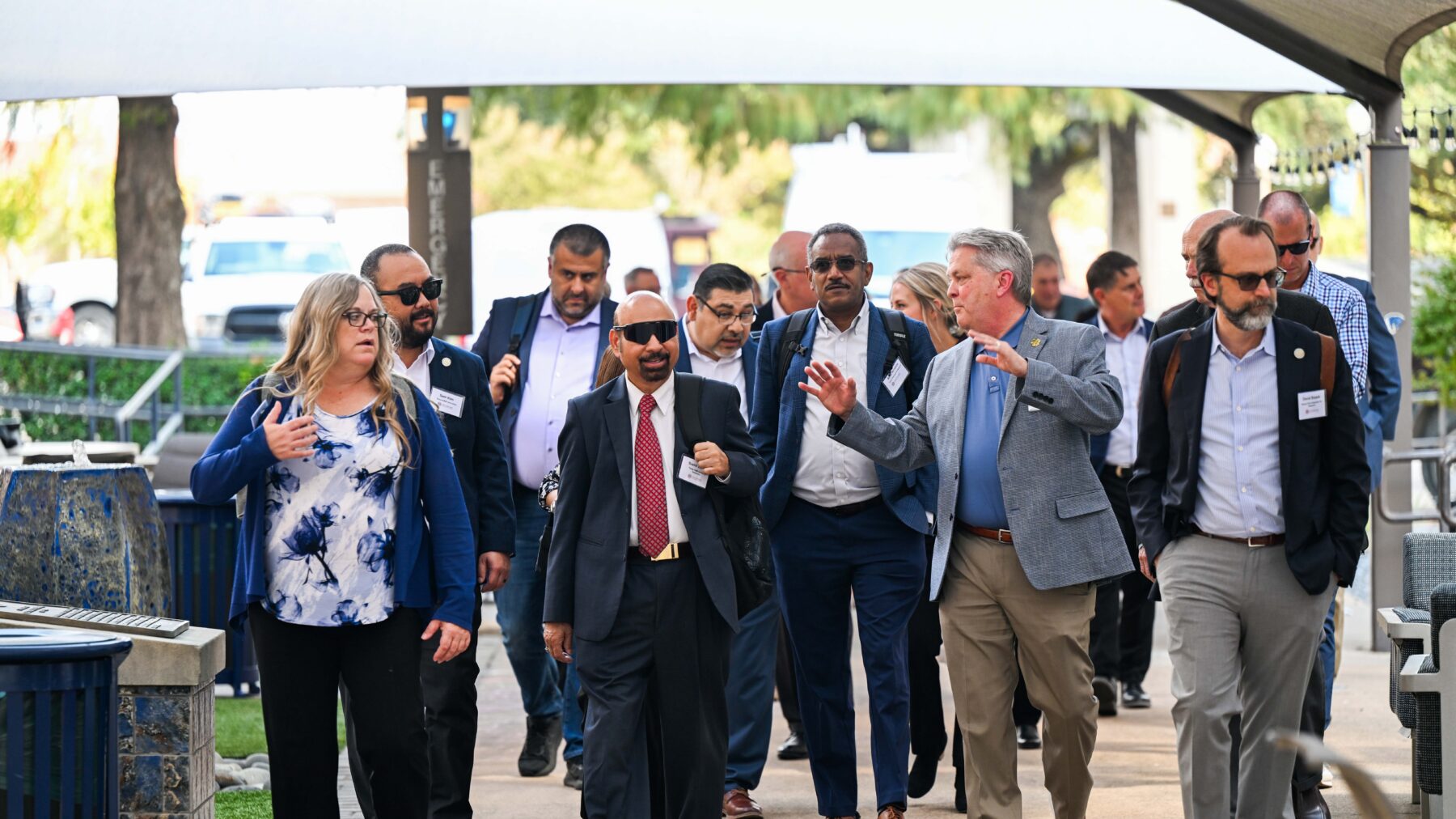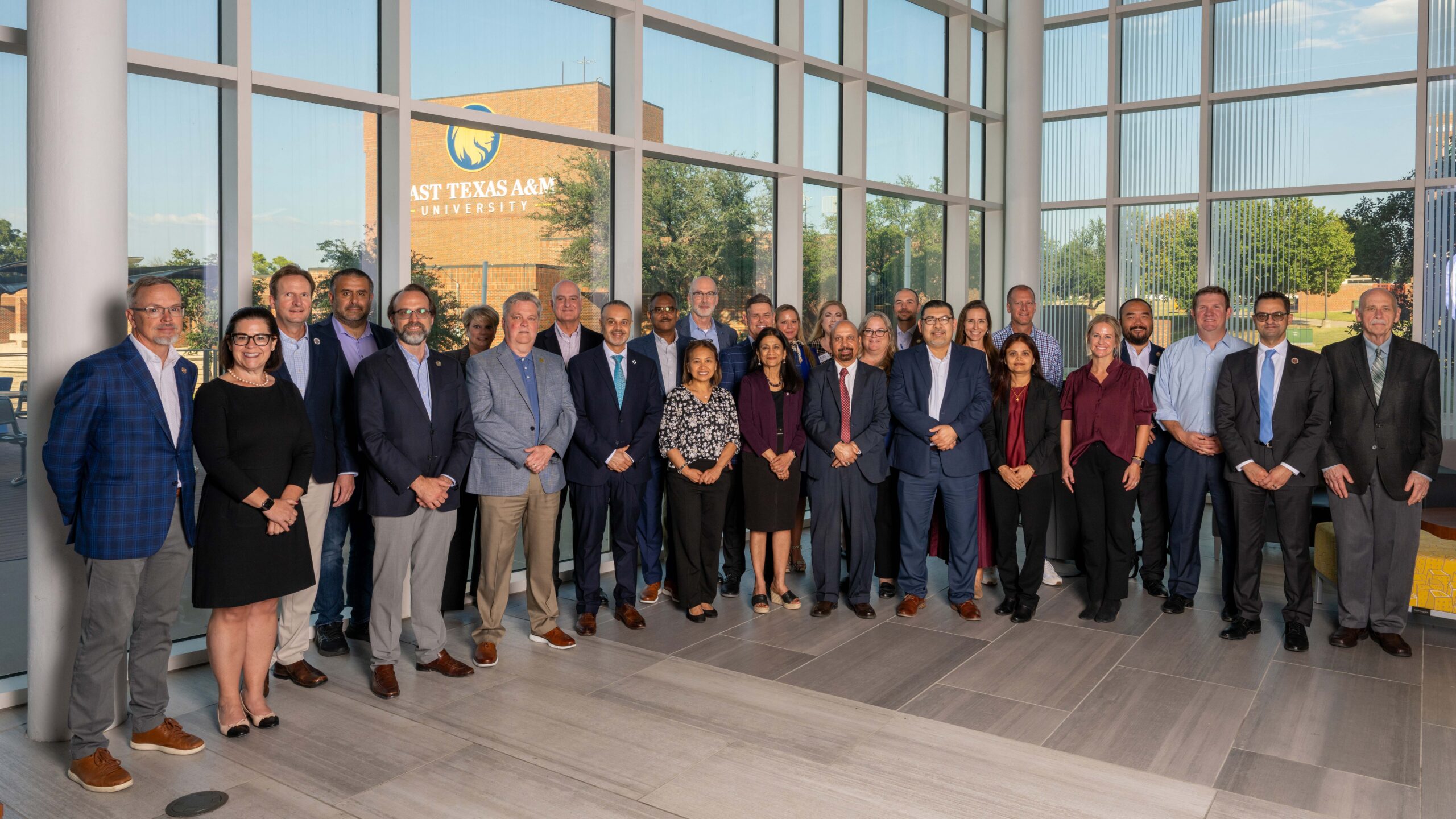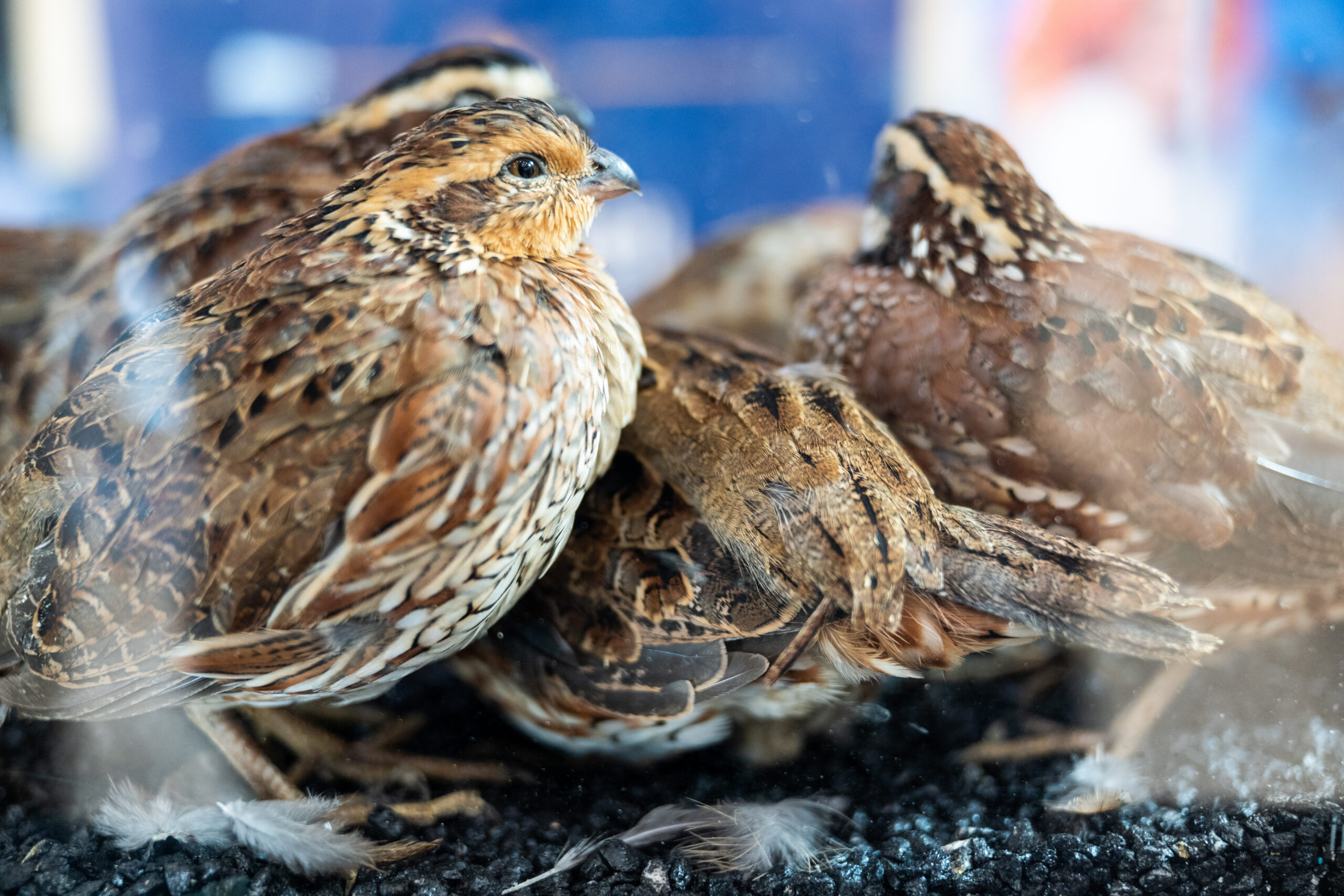
A&M System Leaders Experience ETAMU’s Expanding Research Impact
From gamebird conservation to cancer breakthroughs, the university showcased its growing research achievements during the Texas A&M System’s Chief Research Officers fall meeting.
Research doesn’t just happen in the biggest labs and busiest cities. Sometimes, innovation takes root in unexpected places, like the fields, classrooms and labs of East Texas A&M University. That’s what around 40 research leaders discovered when they arrived in Commerce on Oct. 2 during The Texas A&M University System’s Fall Meeting of Chief Research Officers.
Vice Chancellor for Research Joe Elabd, Ph.D., convenes the meeting twice a year to share updates and strengthen collaboration across the A&M System's research universities, state agencies and government relations. This fall, East Texas A&M was honored to host. The three day event was held at East Texas A&M-Dallas and the main campus in Commerce. On the second day, attendees toured the main campus and learned about its expanding research presence.

Photo Credit: Jason Connel | ETAMU Marketing and Communications
Tour Stop 1: Gamebird Research Takes Flight in East Texas
The first tour stop was the McFarland Science Building, where Dr. Kelly Reyna, director of the Ted and Donna Lyon Center for Gamebird Research, shared the center's impactful research on American gamebirds. One of the center’s goals is to reverse steep declines in quail and other gamebird populations across North America. Reyna explained that North America has lost almost three billion birds, including an 83% decline in quail over the past 50 years.

Photo Credit: Jason Connel | East Texas A&M Office of Marketing and Communications
“Our goal is to discover solutions for sustainable gamebird populations, train the next generation of gamebird professionals and transform the gamebird industry,” Reyna said.
Reyna also previewed new facilities under construction on campus, including a quail research laboratory and quail production facility. The facilities will expand research capacity and encourage public engagement.
Following the presentation, attendees enjoyed viewing live quail that were on display.

Photo Credit: Jason Connel | ETAMU Marketing and Communications
Tour Stop 2: From Cancer Cells to Distant Stars
After interacting with the birds, the tour continued to the Planetarium, where Dr. Andrea Graham, dean of the College of Science and Engineering, shared some of the college’s major research projects.
Graham highlighted important cancer research by Dr. Venugopalan Cheriyath, Ph.D., who has identified a protein—G1P3—that helps breast cancer cells survive, spread and resist treatment. The findings are reported in 29 scientific papers and have been presented at over 50 conferences worldwide.
Graham also discussed Dr. Hyun-Joo Nam's contributions to cancer research. Nam has designed a peptide-based drug, MC-1-F2 that targets drug-resistant cancers and minimizes harm to healthy cells.
Highlighting astronomy research, Graham discussed the university's research collaboration with NASA. ETAMU's Dr. Billy Quarles and his team are collaborating with NASA's Jet Propulsion Laboratory, NASA Ames Research Center and the Space Telescope Science Institute. The team used data from the James Webb Space Telescope to find evidence of a planet orbiting the nearby star Alpha Centauri A. The discovery has garnered global attention, with coverage in The New York Times, BBC News and other media outlets.

Following Dr. Graham's presentation, Dr. Cheri Davis, Planetarium director, presented a teaching demonstration in East Texas A&M's Planetarium. The facility hosts approximately 10,000 visitors annually, providing an immersive educational experience for school groups and the public.
Tour Stop 3: Agriculture Research with Impact
The group's next tour stop was with Dr. Bryan Rank, dean of the College of Agricultural Sciences and Natural Resources. Rank shared that the college is conducting impactful research in urban agriculture, sustainable cattle operations, and hydroponic food production.
Supported by $1.5 million in USDA grants, Dr. Desire Djidonou is leading a project that explores how light frequencies affect hydroponic plant growth. Rank said the study has produced hydroponic tomatoes “that look like young trees.”
Rank also introduced “Gabriel Rita 0108,” a registered Angus cow on the university's farm. Rita ranks in the top 1% of her breed for weaning and yearling weights, indicating strong potential to produce fast-growing, efficient offspring—an asset in the beef industry. The new beef program will launch collaborative research on embryo transfer, genetics and animal health. Plans are also forming for a new embryo transfer lab to advance this work.

Photo Credit: Jason Connel | ETAMU Marketing and Communications
The dean also reported that new ag facilities are under construction, including the state-of-the-art Agricultural Multipurpose Education and Training Center. The complex will serve as a hub for research, student activities and community events.
Tour Stop 4: Science in Motion
The final stop on the research tour was the ROARHP Lab. “ROARHP” is an acronym that stands for “Research Opportunities in Athletics, Recreation, Health, and Performance.”
During the visit, Dr. Michael Oldham, assistant professor of Health and Human Performance, illustrated the lab’s cutting-edge work. Researchers work with elite athletes, first responders, military personnel and other tactical professionals to improve their performance, wellness and resilience.

Photo Credit: Jason Connel | ETAMU Marketing and Communications
Oldham explained that the lab utilizes technologies such as DEXA body scans and DARI motion-capture systems to analyze biomechanics, recovery and performance under real-world stress.
“We are first a service organization,” Oldham said. “Research is second.” He explained that the ROARHP lab uses science and cutting-edge technology to help people perform better, stay healthy and do their jobs safely.
Research Momentum on the Rise
Dr. Brent Donham, vice president for Research and Economic Development, was pleased that East Texas A&M had the opportunity to showcase its growing research achievements.
“It was an honor to host the Texas A&M System's Chief Research Officers fall meeting and highlight not only our facilities but also our researchers and the outstanding ongoing research at East Texas A&M,” he said. “For many of the attendees, it was their first visit to our university.”

Photo Credit: Jason Connel | ETAMU Marketing and Communications
In February, East Texas A&M was designated as a High Research Spending and Doctorate Production university—known as R2—by the Carnegie Classification of Institutions of Higher Education. The designation reflects the university’s growing research influence and emphasis.
From cancer treatment and planet discoveries to human performance, East Texas A&M is demonstrating how regional universities can drive innovation and contribute solutions that matter across Texas and beyond.
Learn more about research at East Texas A&M by visiting etamu.edu/research-and-economic-development/.


